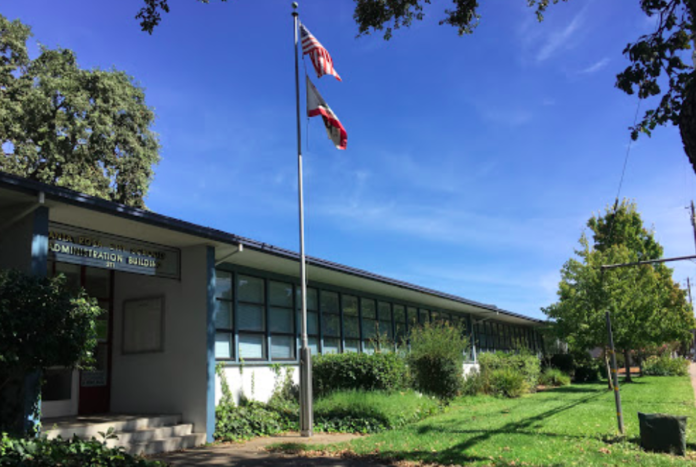The Santa Rosa City Schools Board of Education gave its tentative approval to a two-year contract with the California School Employees Association on March 30. The union represents non-teaching lower-wage earners in the school district—secretaries, food-service employees, custodial staff and others.
The labor agreement with CSEA comes on the heels of a contract the Board of Education ratified last week for teachers in the Santa Rosa school system. The recent two-year deal with the Santa Rosa Teachers Association includes more than $14 million in increases to salary and benefits starting this school year; it raises salaries by 7 percent by 2020, and will raise teachers’ annual medical benefits cap from $5,300 to $6,800. There’s also a $200 dental benefit increase.
Next up is a highly contentious proposal to raise the salary of the SRCS superintendent, Diann Kitamura, and four assistant superintendents. The SRTA has come out strongly against a plan to increase Kitamura’s $200,000 salary by $57,000, retroactive to 2018, and with additional scheduled raises over the next two years.
The CSEA has yet to take a position on the proposal even as the SRTA has blasted it. The CSEA deal with the Board of Education increases future salaries, in phases, by 7.5 percent, starting in July of this year, and also increases the CSEA’s Health and Welfare cap to $907. The contract has not been ratified by CSEA or the Board of Education. The CSEA is an affiliated member of the AFL-CIO and at 230,000 members, is the largest classified school union in the country (according to Wikipedia).
The Santa Rosa City Schools district has 24 schools, 15,000 students and a total staff of 1,600 according to stats from the district. It’s the largest school district in Sonoma County. The tentative agreement comes after months of negotiation and as California teachers have gone on strike in Oakland and Los Angeles over lagging wages and little help from Sacramento.
Kitamura reiterated a call she’s made numerous times to increase state funding for education in an April 30 press release that announced the tentative deal with CSEA.
“We cannot provide a quality education without our dedicated classified staff, and we are happy to have signed a tentative agreement with CSEA,” she wrote.
“Like other districts throughout California, we know that our budget challenges are not going away. We look forward to joining with our classified staff and demanding that lawmakers in Sacramento provide the full and fair funding that all of California’s students deserve. . .”
Even as it worked to hammer out new labor agreements with the two unions, the seven elected members of the Board of Education have yet to consider the proposed pay hike for the superintendent and assistant superintendents.
According to a late April press release from the school district, a vote on raising management’s pay was put off to another day at the Board of Education meeting where the SRTA contract was ratified.
The SRTA has come out strongly against the proposed 29 percent retroactive pay hike for Kitamura and the assistant superintendents.
“The board also had been expected to consider contracts and salary increases for the superintendent and four assistant superintendents, to reflect increased duties in those positions and to bring salaries closer to those of other comparable—and even smaller—school districts,” the release notes.
“However, the item was pulled from the agenda when two of the seven board members could not attend the meeting. Board Vice President Laurie Fong, who was chairing the meeting, said it will be brought back to the full board at a future meeting.”
That future meeting is coming up on May 8. Here’s some perspective in the meantime:
According to the California Department of Education, the average starting salary for teachers in the state is around $48,000; the state DOE reports that teachers’ annual salaries peak at about $106,000 a year. School principals can earn up to $150,000 annually, while a superintendent can earn up to $271,000 a year.
Online data at transparentcalifornia.com shows that Santa Rosa schools superintendent Kitamura’s total compensation package for 2018 was $237,661,000; $200k was her 2018 base salary. A $57,000 raise would put her total compensation package at over $300,000 a year.
The SRTA has offered numerous points of contention and opposition to the proposal, which would see Kitamura’s salary jump by 29 percent, from 200k to $257,000, retroactive to 2018—and with an additional 7 percent raise between now and 2020.
The SRTA says management’s raise should be in line with their own, at 3 percent annually and without the retroactive pay to 2018. They also note in a press release that many non-teaching staff currently earn less than $15 an hour. In local news reports about the dust-up Kitamura has said she’s earned the raise because of (among other reasons) an increased workload due to the 2017 wildfires.
Kitamura also brought up the specter of bigotry at play when she told the Press Democrat recently that nobody would be taking issue with the proposed pay hike if she were a white man and not a Japanese-American woman.
Meanwhile, the transparentcalifornia.com site lists nearly 900 teachers in the Santa Rosa School District and their 2018 benefits packages; dozens of teachers on the list are earning $80,000 and up and have total compensation packages that exceed $100,000 a year.











